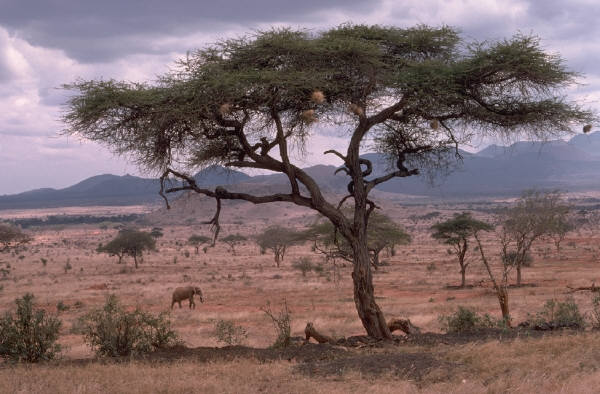
Equus grevyi
Alexandra E. Price
Habitat
 Grevy's zebra
historically have been found in
Djibouti, Somalia, Ethiopia, and Kenya.
Today they are mainly found in Kenya,
Ethiopia, and parts of Sudan. The
largest and most stable population lives
near Buffalo Springs, Sumburu, and
Chaba National Reserves.
More recently the range of Grevy's in
Kenya has extended onto the Laikipia
Plateau and the Lewa Wildlife
Conservancy. Check out this
information on
the Lewa Wildlife Conservancy.
Grevy's zebra
historically have been found in
Djibouti, Somalia, Ethiopia, and Kenya.
Today they are mainly found in Kenya,
Ethiopia, and parts of Sudan. The
largest and most stable population lives
near Buffalo Springs, Sumburu, and
Chaba National Reserves.
More recently the range of Grevy's in
Kenya has extended onto the Laikipia
Plateau and the Lewa Wildlife
Conservancy. Check out this
information on
the Lewa Wildlife Conservancy.

Grevy's occupy semi-deserts with low vegetation and scattered Acacia bush with herbs and grasses. They prefer stony plains or hills, short grassy flats, or broken country.
Endangered Grevy's
In recent history, Grevy's zebra has undergone one of the most substantial reductions of range of any African mammal. In the 1970s there were approximately 15,000 animals and present day estimates are between 3,000 and 3,5000 animals. This is a 75% decline in numbers. They are currently on the endangered species list. In Ethiopia Grevy's are legally protected. Kenya has no legal protection but they were protected by a hunting ban in 1977.
Grevy's were probably exterminated in Somalia due to hunting for food, trophies, and possible medicinal use by the Somali people. Until the 1980s Grevy's zebra skins were sought by hunters either as trophies or for fashion markets of Europe and North America. At the present time, there is no legal trade of Grevy's parts and the small amount of movement in zebra skins is likely from old skins of animals in the late 1970s.
So why are they disappearing???
Some reasons:
1. Reduction of water sources... exclusion from water sources from pastoral people so they can sustain their cattle herds
2. Habitat
degradation and loss...

heavy grazing of domestic livestock
resulting in a change in vegetation
and erosion of land
3. Competition for resources...
limited resources, especially in the
dry season, for pastoral people,
livestock, and other wildlife
4. Tourism... ineffective management in
protected areas
5. Hunting... killing of zebras in the past for skins and presently killing for meat
6. Trade in live Grevy's zebra... relocating zebras for sale or exchange for other animals on private ranches
Copyright © 2007, Design by: Sunlight webdesign